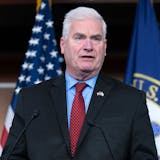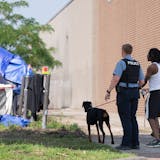Right now, not much but mounds of snow sit atop the roof of Edina's public works building. But that will change in the spring, when the city installs solar panels to create a community solar garden.
Clean energy advocates say the solar array is just one way that metro area suburbs are leading the charge on energy efficiency in Minnesota. The suburbs make up a major part of the state's carbon footprint, and in more affluent suburbs the reason is simple, Abby Finis said: Larger homes and longer commutes.
"We're seeing a big shift in the general consciousness of energy among residents and among cities," said Finis, senior planner for the Great Plains Institute, a sustainable energy nonprofit. "I think they are in the early stages of big change."
St. Louis Park last month unveiled an energy plan with the goal of drawing all the city's electricity from renewables by 2025. Bloomington is in the process of forming its first sustainability commission. Edina hired its first sustainability coordinator last year, and its Energy and Environment Commission is behind the upcoming solar garden.
Throughout the west metro, Xcel Energy has begun switching its streetlights to LED lights that it says are cheaper and greener.
Many leaders in sustainability, worried the Trump administration won't do much to address climate change, applaud the recent actions taken by local governments.
"Local players are going to be much more important going forward than they ever have been before," Finis said.
Minnesota's Next Generation Energy Act, which turns 10 this year, set two benchmarks for the state back in 2007.



